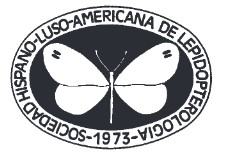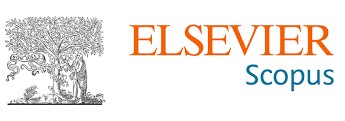The Anti-Lebanon ridge as the edge of the distribution range for Euro-Siberian and Irano-Turanian faunistic elements in the Mediterranean biome: A case study (Lepidoptera: Noctuidae)
DOI:
https://doi.org/10.57065/shilap.888Keywords:
Lepidoptera, Noctuidae, Mediterranean, Irano-Turanian, xeromontane, alpine, orofauna, chorology, biodiversity, peripheral populations, Mount Hermon, IsraelAbstract
The Lebanon and Anti-Lebanon ridges are located in the middle of a narrow “Mediterranean ecozone” corridor stretching along the Levantine coast. Both ridges are high enough to feature a complete range of altitude zones, which includes an alpine tragacanth belt (> 2000 m a.s.l.). The southernmost part of the Anti-Lebanon ridge is situated in the northernmost part of Israel. Among the 548 Israeli Noctuidae species, 106 species (21%) occur only in this small mountainous area. Among them, 17 are endemic and the populations of the remaining 89 species are at the edge of their distribution range. Montane forest acts as the southernmost shelter for Euro-Siberian and Mediterranean arboreal Noctuidae fauna. The higher altitudes host Mediterranean and Irano-Turanian oromontane species with a few lowland Euro-Siberian species. The alpine faunas of the Lebanon and Anti-Lebanon ridges are similar, although the Anti-Lebanon ridge, being in the shadow of the Lebanon ridge, receives significantly less precipitation. Nonetheless, it features a Mediterranean biome on its western slopes, while its eastern slopes, facing the Syrian steppe, feature mainly Irano-Turanian fauna. Constituting a border between the Mediterranean and Irano-Turanian faunas, the higher elevations of this ridge present a meeting point of the alpine and xeromontane Noctuidae, making it exceptionally species-rich.
Downloads
Global Statistics ℹ️
|
422
Views
|
224
Downloads
|
|
646
Total
|
|
References
ALIEV, S. A., 1984.– Noctuidae of Azerbaijan: 178 pp. Baku, “Elm”. [in Russian].
AUERBACH, M. & SHMIDA, A., 1992.– Vegetation change along an elevational gradient on Mt. Hermon, Israel: No evidence for discrete communities. - Journal of Ecology, 81: 25-33. DOI: https://doi.org/10.2307/2261221
BENYAMINI, D., 2010.– A Field Guide to the Butterflies of Israel. Including Butterflies of Mt. Hermon, Sinai and Jordan: 234 pp. Keter, Jerusalem.
CHOI, S. W. & AN, J. S., 2010.– Altitudinal distribution of moths (Lepidoptera) in Mt. Jirisan National Park, South Korea. - European Journal of Entomology, 107: 229-245. DOI: https://doi.org/10.14411/eje.2010.031
CHOI, S. W. & MILLER, J. C., 2013.– Species richness and abundance among macromoths: A comparison of taxonomic, temporal and spatial patterns in Oregon and South Korea.– Entomological Research, 43: 312-321. DOI: https://doi.org/10.1111/1748-5967.12036
COHEN, S. S., GALE J., SHMIDA, A., POLJAKOFF-MAYBER, A. & SURAQUI, S., 1981.– Xeromorphism and potential rate of transpiration on Mount Hermon, an East Mediterranean Mountain.– Journal of Ecology, 69: 391-403. DOI: https://doi.org/10.2307/2259675
CZERNY, H., 1932-1934.– Lepidopteren aus dem nordlichen Libanon (mit Beutragen von Dr. A. Corty (Zurich), F. Daniel (Munchen), L. Schwingenschuss (Wien) und Dr. E. Wehrli (Basel).– Deutsche Entomologische Zeitschrift, Iris, 46(1932): 157-191, 47(1993): 60-109, 48(1934): 1-28.
DANIN, A., ORSHAN, G. & ZOHARY, M., 1975.– Vegetation of the northern Negev and the Judean Desert of Israel.– Israel Journal of Botany, 24: 118-172.
DANIN, A., 1992.– Flora and vegetation of Israel and adjacent areas.– Bocconea, 3: 18-42.
ELLISON, R. & WILTSHIRE, E. P., 1939.– The Lepidoptera of the Lebanon with notes on their season and distribution.– Transactions of the Royal Entomological Society of London, 88: 1-56. DOI: https://doi.org/10.1111/j.1365-2311.1939.tb01020.x
GRACE, A., 2010.– Introductory Biogeography to Bees of the Eastern Mediterranean and Near East: 283 pp. Bexhill Museum Association, Sussex.
KRAVCHENKO, V. D., FIBIGER, M., HAUSMANN, A. & MÜLLER, G. C., 2007a.– The Lepidoptera of Israel. Erebidae, 1: 167 pp. Pensoft, Sofia.
KRAVCHENKO, V. D., FIBIGER, M., HAUSMANN, A. & MÜLLER, G. C., 2007b.– The Lepidoptera of Israel. Noctuidae, 2: 320 pp. Pensoft, Sofia.
MAGURRAN, A. E., 2004.– Measuring biological diversity: 264 pp. Blackwell Publishing, Oxford.
MÜLLER, G. C. & KRAVCHENKO, V. D., 2005b.– Insektenforscher in Israel.– In Tiere und Kunst aus Israel. In K. SCHOENITZER (Ed.). Tiere und Kunst aus Israel. Munchen: Berichte der Freunde der ZSM, 2: 15-17.
MÜLLER, G. C., KRAVCHENKO, V. D., CHIKATUNOV, V., ORTAL, R., CHUANG, LI, WITT, T., SPEIDEL, W., MOOSER, J. & HAUSMANN, A., 2006.– General aspects of the Israeli Light-trap Network concerning Coleoptera.– Esperiana, 12: 281-288.
MÜLLER, G. C., KRAVCHENKO, V. D. & SCHLEIN, Y., 2005.– Die Erforschung der Israelischen Lepidopteren Fauna.– In K. SCHOENITZER (Ed.). Tiere und Kunst aus Israel. Munchen: Berichte der Freunde der ZSM, 2: 30-39.
NATAN, R. & WERNER, Y. L., 1999.– Reptiles and breeding birds on Mt. Hermon: patterns of altitudinal distribution and species richness.– Israel Journal of Zoology, 45: 1-33.
PAROLLY, G., 2004.– The high mountain vegetation of Turkey - a state of the art report, including a first annotated conspectus of the major syntaxa.– Turkish Journal of Botany, 28: 39-63.
POR, D., 1975.– An Outline of the Zoogeography of the Levant.– Zoologica Scripta, 4: 5-11. DOI: https://doi.org/10.1111/j.1463-6409.1975.tb00713.x
ROMDAL, T. S. & GRYTNES, A. G., 2007.– An indirect area effect on elevational species richness patterns.– Ecography, 30: 440-448. DOI: https://doi.org/10.1111/j.2007.0906-7590.04954.x
SHALMON, B., 1993.– A field guide to the land mammals of Israel, their tracks and signs: 216 pp. Keter Publishing, Jerusalem.
SHMIDA, A., 1977.– Quantitative analysis of Tragacanthic vegetation of Mt. Hermon. Ph.D. thesis. Hebrew University of Jerusalem, Jerusalem. [in Hebrew].
TALHOUK, A. S., 1997.– Insect’s Role in the Environment: Diversity of moths in Lebanon: 269 pp. The Fares Foundation, Beirut.
THOMPSON, A., 2000.– Origins of Arabia: 106 pp. Stacey International Publishers, London.
VARGA, Z., 2003.– The Geographical Distribution of High Mountain Macrolepidoptera in Europe: 239-257.– In L. NAGY, G. GRABHERR, C. KÖRNER & D. B. A. THOMPSON (Eds.). Alpine Biodiversity in Europe: XXXI + 479 pp. Springer-Verlag Berlin, Heidelberg. DOI: https://doi.org/10.1007/978-3-642-18967-8_13
VERHEYDEN, S., NADER, F. H., CHENG, H. J., EDWARDS, L. R. & SWENNEN, R., 2008.– Paleoclimate reconstruction in the Levant region from the Geochemistry of a Holocene stalagmite from the Jeita cave, Lebanon.– Quatres Research. 70: 368-381. DOI: https://doi.org/10.1016/j.yqres.2008.05.004
WILSON, M. V. & SHMIDA, A., 1984.– Measuring Beta Diversity with Presence-Absence Data.– Journal of Ecology, 72: 1055-1064. DOI: https://doi.org/10.2307/2259551
WILTSHIRE, E. P., 1940.– The Lepidoptera of the Lebanon. Addendum.– Transactions of the Royal Entomological Society of London, B9: 79-82. DOI: https://doi.org/10.1111/j.1365-3113.1940.tb00349.x
YOM-TOV, Y., 1988.– The zoogeography of Israel: Distribution and abundance at a zoogeographical crossroad: 573 pp. Dr. W. Junk Publishers, Dordrecht.
ZOHARY, M., 1973.– Geobotanical foundations of the Middle-East: 765 pp. Stuttgart Gustav Fischer Verlag, Amsterdam.
Published
How to Cite
Issue
Section
License
Copyright (c) 2017 V. D. Kravchenko, A.-L.-L. Friedman, G. C. Müller

This work is licensed under a Creative Commons Attribution 4.0 International License.
The author SS retains his trademark and patent rights to any process or procedure within the article.
The author retains the right to share, distribute, perform and publicly communicate the article published in SHILAP Revista de lepidopterología, with initial acknowledgement of its publication in SHILAP Revista de lepidopterología.
The author retains the right to make a subsequent publication of his work, from using the article to publishing it in a book, provided that he indicates its initial publication in SHILAP Revista de lepidopterología.
Each submission to SHILAP Revista de lepidopterología must be accompanied by an acceptance of copyright and acknowledgement of authorship. By accepting them, authors retain copyright of their work and agree that the article, if accepted for publication by SHILAP Revista de lepidopterología, will be licensed for use and distribution under a "Creative Commons Attribution 4.0 International" (CC BY 4.0) licence that allows third parties to share and adapt the content for any purpose giving appropriate credit to the original work.
You may read here the basic information and the legal text of the license. The indication of the CC BY 4.0 License must be expressly stated in this way when necessary.
As of 2022, the content of the print and digital version is licensed under a "Creative Commons Attribution 4.0 International License" (CC BY 4.0), licence that allows third parties to share and adapt the content for any purpose giving appropriate credit to the original work.
Previous content in the journal was published under a traditional copyright licence; however, the archive is available for free access.
When using the contents of SHILAP Revista de lepidopterología published before 2022, including figures, tables or any other material in printed or electronic format belong to the authors of the articles, the authors must obtain the permission of the copyright holder. Legal, financial and criminal liabilities in this respect belong to the author(s).
In application of the Principle of Priority of the International Code of Zoological Nomenclature, no other version than the one published by the publisher may be deposited in repositories, personal websites or similar.





























